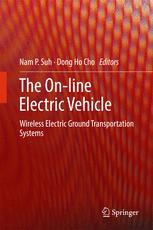

Most ebook files are in PDF format, so you can easily read them using various software such as Foxit Reader or directly on the Google Chrome browser.
Some ebook files are released by publishers in other formats such as .awz, .mobi, .epub, .fb2, etc. You may need to install specific software to read these formats on mobile/PC, such as Calibre.
Please read the tutorial at this link: https://ebookbell.com/faq
We offer FREE conversion to the popular formats you request; however, this may take some time. Therefore, right after payment, please email us, and we will try to provide the service as quickly as possible.
For some exceptional file formats or broken links (if any), please refrain from opening any disputes. Instead, email us first, and we will try to assist within a maximum of 6 hours.
EbookBell Team

4.0
96 reviewsThis book details the design and technology of the on-line electric vehicle (OLEV) system and its enabling wireless power-transfer technology, the “shaped magnetic field in resonance” (SMFIR). The text shows how OLEV systems can achieve their three linked important goals:
SMFIR provides power to the OLEV by wireless transmission from underground cables using an alternating magnetic field and the reader learns how this is done. This cable network will in future be part of any local smart grid for energy supply and use thereby exploiting local and renewable energy generation to further its aims.
In addition to the technical details involved with design and realization of a fleet of vehicles combined with extensive subsurface charging infrastructure, practical issues such as those involved with pedestrian safety are considered. Furthermore, the benefits of reductions in harmful emissions without recourse to large banks of batteries are made apparent.
Importantly, the use of Professor Suh’s axiomatic design paradigm enables such a complicated transportation system to be developed at reasonable cost and delivered on time. The book covers both the detailed design and the relevant systems-engineering knowledge and draws on experience gained in the successful implementation of OLEV systems in four Korean cities.
The introduction to axiomatic design and the in-depth discussion of system and technology development provided by The On-line Electric Vehicle is instructive to graduate students in electrical, mechanical and transportation engineering and will help engineers and designers to master the efficient, timely and to-cost implementation of large-scale networked systems. Managers responsible for the running of large transportation infrastructure projects and concerned with technology management more generally will also find much to interest them in this book.